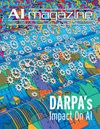多模态大语言模型调优的最新进展
IF 3.2
4区 计算机科学
Q3 COMPUTER SCIENCE, ARTIFICIAL INTELLIGENCE
引用次数: 0
摘要
微调是多模态大型语言模型的关键适应机制,将其预训练的知识与专门的下游任务需求连接起来。本文回顾了最近在三个关键维度上的微调进展:(1)降低资源成本的效率导向方法;(2)针对能力的技术,提高专业的多模式技能;(3)架起理解和生成的桥梁的任务统一方法。我们展示了这些方向如何将多模态大型语言模型从通用基础转变为自适应的、与人类一致的系统,为研究人员提供了开发下一代多模态人工智能的结构化路线图。本文章由计算机程序翻译,如有差异,请以英文原文为准。

Recent advances in finetuning multimodal large language models
Finetuning serves as the critical adaptation mechanism for multimodal large language models, bridging their pretrained knowledge with specialized downstream task requirements. This paper reviews recent finetuning advances across three key dimensions: (1) efficiency-oriented methods that reduce resource costs; (2) capability-specific techniques enhancing specialized multimodal skills; and (3) task-unifying approaches that bridge understanding and generation. We demonstrate how these directions transform multimodal large language models from versatile foundations into adaptive, human-aligned systems, providing researchers with a structured roadmap for developing next-generation multimodal AI.
求助全文
通过发布文献求助,成功后即可免费获取论文全文。
去求助
来源期刊

Ai Magazine
工程技术-计算机:人工智能
CiteScore
3.90
自引率
11.10%
发文量
61
审稿时长
>12 weeks
期刊介绍:
AI Magazine publishes original articles that are reasonably self-contained and aimed at a broad spectrum of the AI community. Technical content should be kept to a minimum. In general, the magazine does not publish articles that have been published elsewhere in whole or in part. The magazine welcomes the contribution of articles on the theory and practice of AI as well as general survey articles, tutorial articles on timely topics, conference or symposia or workshop reports, and timely columns on topics of interest to AI scientists.
 求助内容:
求助内容: 应助结果提醒方式:
应助结果提醒方式:


